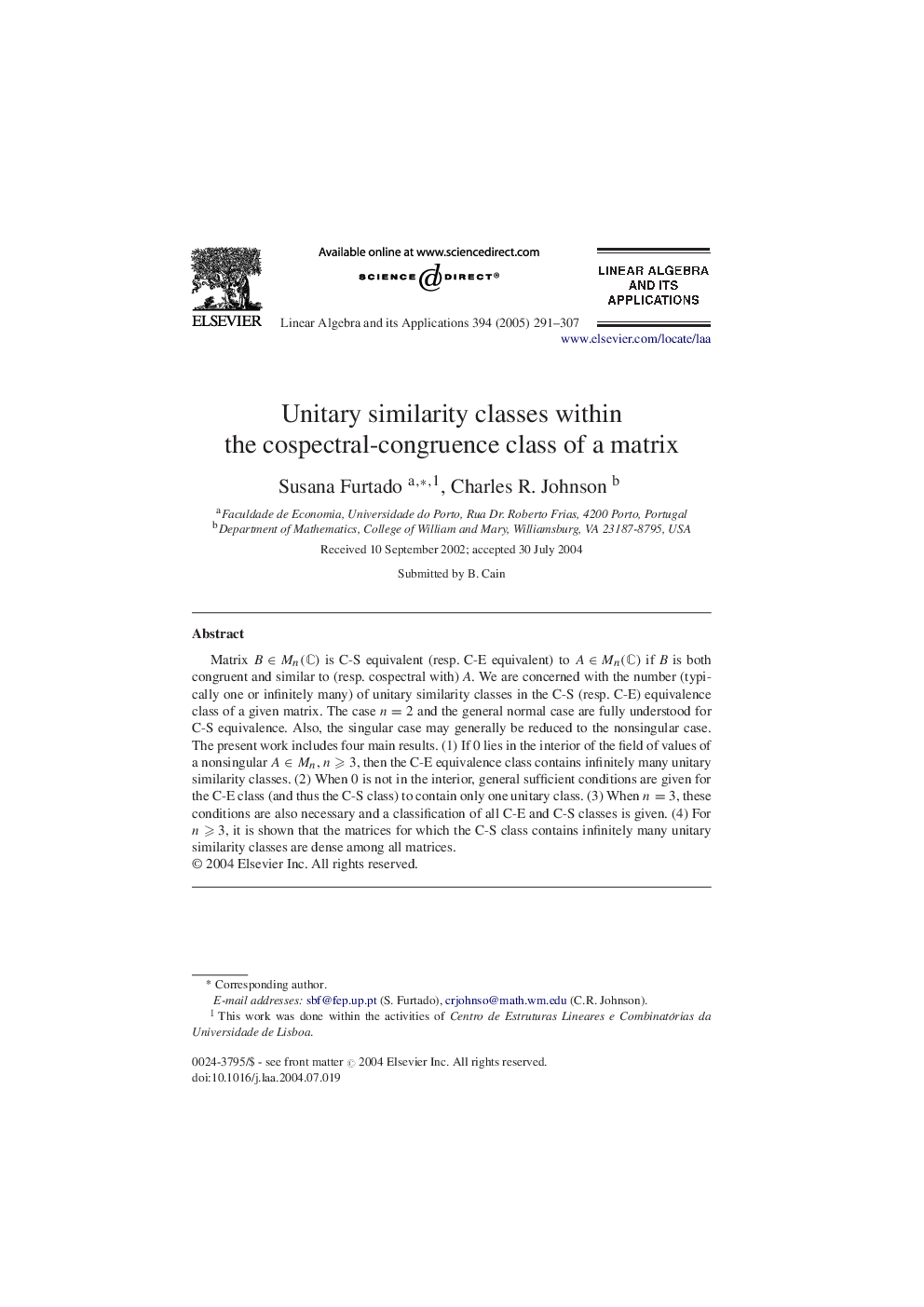| Article ID | Journal | Published Year | Pages | File Type |
|---|---|---|---|---|
| 9498644 | Linear Algebra and its Applications | 2005 | 17 Pages |
Abstract
Matrix BâMn(C) is C-S equivalent (resp. C-E equivalent) to AâMn(C) if B is both congruent and similar to (resp. cospectral with) A. We are concerned with the number (typically one or infinitely many) of unitary similarity classes in the C-S (resp. C-E) equivalence class of a given matrix. The case n = 2 and the general normal case are fully understood for C-S equivalence. Also, the singular case may generally be reduced to the nonsingular case. The present work includes four main results. (1) If 0 lies in the interior of the field of values of a nonsingular A â Mn, n ⩾ 3, then the C-E equivalence class contains infinitely many unitary similarity classes. (2) When 0 is not in the interior, general sufficient conditions are given for the C-E class (and thus the C-S class) to contain only one unitary class. (3) When n = 3, these conditions are also necessary and a classification of all C-E and C-S classes is given. (4) For n ⩾ 3, it is shown that the matrices for which the C-S class contains infinitely many unitary similarity classes are dense among all matrices.
Related Topics
Physical Sciences and Engineering
Mathematics
Algebra and Number Theory
Authors
Susana Furtado, Charles R. Johnson,
